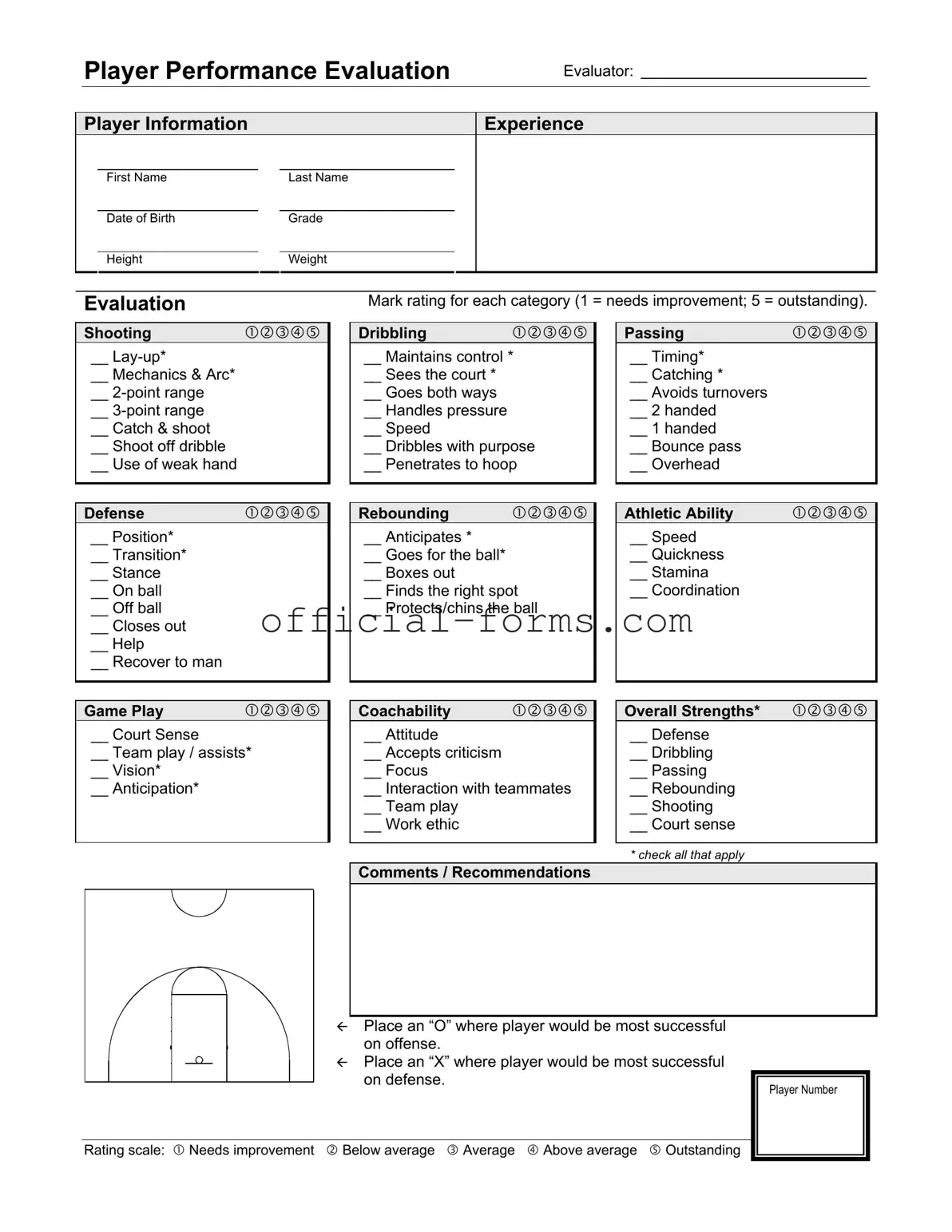When filling out the Basketball Evaluation form, individuals often encounter several common pitfalls that can lead to inaccuracies in the assessment. One frequent mistake is neglecting to provide complete player information. Missing details such as the player’s first name, last name, or date of birth can hinder the evaluation process. Without this basic information, it becomes challenging to track the player’s progress over time or to ensure that the evaluation is linked to the correct individual.
Another common error arises in the evaluation of player performance categories. Many evaluators fail to rate each skill accurately. For instance, they might give a high rating in shooting without considering the player’s performance in lay-ups or mechanics. This oversight can create a skewed perception of a player’s overall abilities. It is essential to consider each category independently and rate them based on observed performance to provide a fair and comprehensive evaluation.
In addition to rating inaccuracies, evaluators sometimes overlook the importance of comments and recommendations. This section is crucial for providing context to the ratings given. Failing to include specific observations or suggestions for improvement can leave the player and their coaches without valuable insights. Comments help clarify the rationale behind the ratings and can guide future training efforts.
Another mistake involves the misuse of the rating scale. Some evaluators may not fully understand the scale's intent, leading to inconsistent ratings. For example, marking a player as “outstanding” in multiple categories without justification can diminish the credibility of the evaluation. It is vital to apply the rating scale thoughtfully and consistently to ensure that it accurately reflects the player’s abilities.
Additionally, evaluators may forget to mark the sections for offensive and defensive strengths with “O” and “X,” respectively. This omission can result in a lack of clarity regarding where the player excels on the court. Clearly identifying these areas can help coaches and players focus their training efforts more effectively, enhancing the player’s development.
Another issue arises with the evaluation of coachability. Evaluators sometimes underestimate the significance of a player’s attitude and work ethic. While technical skills are essential, a player’s willingness to learn and accept feedback is equally important. Neglecting to assess these qualities can lead to an incomplete picture of the player’s potential.
Lastly, evaluators often rush through the process, leading to superficial assessments. Taking the time to observe each skill in practice or game situations can yield a more accurate evaluation. A thorough approach ensures that each player receives the attention they deserve, ultimately benefiting their development and performance on the court.
